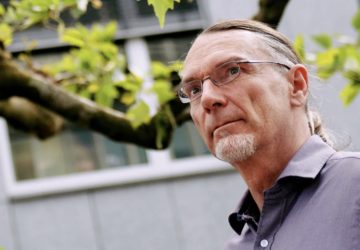Veronique Greenwood in Quanta:
 Every organism responds to the world with an intricate cascade of biochemistry. There’s a source of heat here, a faint scent of food there, or the crack of a twig as something moves nearby. Each stimulus can trigger the rise of one set of molecules in an animal’s body and perhaps the fall of others. The effect ramifies, tripping feedback loops and flipping switches, until a bird leaps into the air or a bee alights on a flower. It’s a vision of biology that entranced Andreas Wagner, an evolutionary biologist at the University of Zurich, when he was still a young student.
Every organism responds to the world with an intricate cascade of biochemistry. There’s a source of heat here, a faint scent of food there, or the crack of a twig as something moves nearby. Each stimulus can trigger the rise of one set of molecules in an animal’s body and perhaps the fall of others. The effect ramifies, tripping feedback loops and flipping switches, until a bird leaps into the air or a bee alights on a flower. It’s a vision of biology that entranced Andreas Wagner, an evolutionary biologist at the University of Zurich, when he was still a young student.
“I thought that was much more fascinating than this idea that biology is about counting the number of things that are out there,” he said. “I realized biology could be about fundamental principles of organization in living systems.”
His career, which has included stints at the Santa Fe Institute and the Institute for Advanced Study in Berlin, has taken him from modeling the regulation of gene transcription in an embryo, where precision timing makes the difference between life and death, to asking how an organism can manage to evolve when any change in its genes could spell disaster.
More here.
